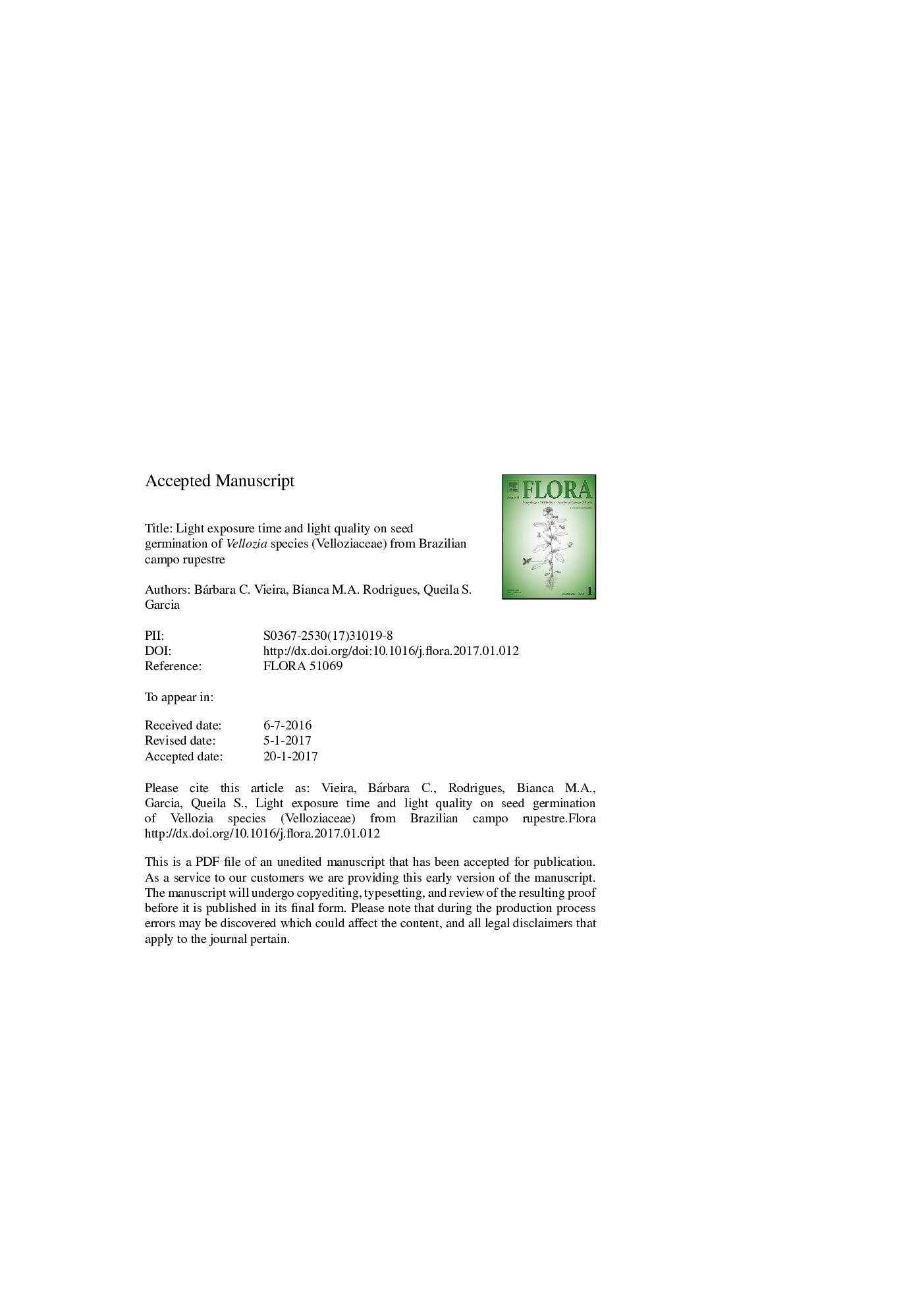| Article ID | Journal | Published Year | Pages | File Type |
|---|---|---|---|---|
| 8470226 | Flora - Morphology, Distribution, Functional Ecology of Plants | 2018 | 20 Pages |
Abstract
Species of Vellozia (Velloziaceae) inhabit open environments and produce small seeds with varying light-mediated germination requirements as a function of temperature. However, little is known about light quality and exposure time required for their germination. We aim to determine the germination responses of Vellozia species in relation to time and light quality. Seeds fully imbibed in the dark at 25 °C were exposed to single light pulses, or pulses interrupted by dark periods (intermittent) for five consecutive days, or five different R:FR (red:far-red light) ratios. Control treatment seeds were maintained in constant light or darkness, or under 12-h photoperiod. The light time necessary to reach maximum germinability varied from two hours (Vellozia glauca) to 84 h (V. albiflora); V. lilacina seeds did not germinate even after 96 h of continuous exposure to light, while most species required more than 24 h of light to reach maximum germination. The least time necessary to obtain 50% germination (t50) was 1 h (V. glauca), while the maximum time was 103.8 h (V. lilacina). The t50 for intermittent light was 10 min (V. glauca) and the maximum time was 8 h (V. glandulifera). Vellozia lilacina and V. albiflora did not attain maximum germinability after 8 h of exposure to light during five consecutive days, demonstrating that intermittent light pulses are more efficient than continuous pulses for germination. Vellozia pusilla and V. albiflora presented maximum germination only at the greatest R:FR ratio (0.77), while V. caruncularis and V. glauca reached maximum germinability at the lowest R:FR ratios (0.02 and 0.08 respectively). The seeds of Vellozia spp. required different periods of light exposure and different R:FR ratios to reach maximum germinability, demonstrating a convergence between the time of light and the R:FR ratio. However, we were unable to find a germination pattern for the genus.
Keywords
Related Topics
Life Sciences
Agricultural and Biological Sciences
Ecology, Evolution, Behavior and Systematics
Authors
Bárbara C. Vieira, Bianca M.A. Rodrigues, Queila S. Garcia,
